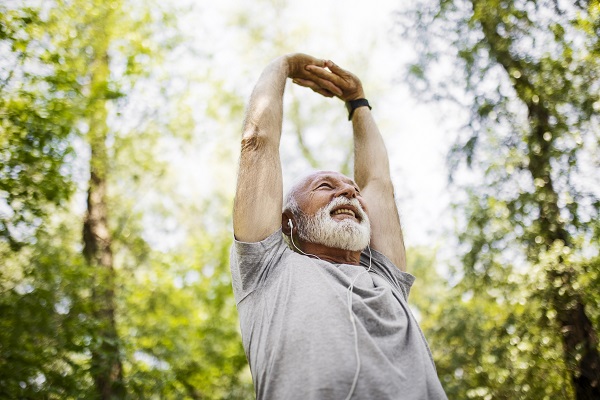The Importance of Stretching

It’s a stereotype about aging—muscles tighten and we can’t quite move like we used to. Getting older doesn’t mean we are destined to decreasing mobility and range of motion. And one of the most important thing we can do to maintain mobility as we age is stretching!
As we age, our muscles, tendons, and ligaments do naturally lose some of their elasticity, making them more susceptible to injury. In addition, older adults may experience a decline in balance and coordination, which can also increase the risk of falls and injuries. Falls and injuries can cause a spiral of chronic health conditions that lead to a loss of independence for older people.
A regular stretching routine can help older adults to maintain or improve flexibility, range of motion, and balance. This can help to reduce the risk of falls and injuries, as well as improve overall mobility and quality of life. Stretching can also help to reduce muscle stiffness and soreness.
Static stretching, in which a muscle is held in a stretched position for a period of time, is often recommended for older adults. Static stretching can be done at any time, but it’s most effective when done after a workout or after a period of physical activity when the muscles are warm. Dynamic stretching, which involves moving a muscle through its full range of motion, can also be beneficial, but it’s important to start slowly and progress gradually.
Older adults may also benefit from other forms of exercise such as yoga and tai chi, which incorporate stretching and balance exercises. These forms of exercise can help to improve flexibility, balance, and coordination, as well as promote relaxation and reduce stress.
It’s also important for older adults to be mindful of proper technique when stretching to avoid injury. This includes never stretching to the point of pain and avoiding any stretches that may cause discomfort.
In addition to physical benefits, stretching can also have mental and emotional benefits for older adults. A regular stretching routine can help to reduce stress and tension, improve mood, and promote a sense of well-being. It can also be a way to improve social connections and engage with others.
Ask your doctor or physical therapist for a stretching routine that is right for you.
Source: IlluminAge

